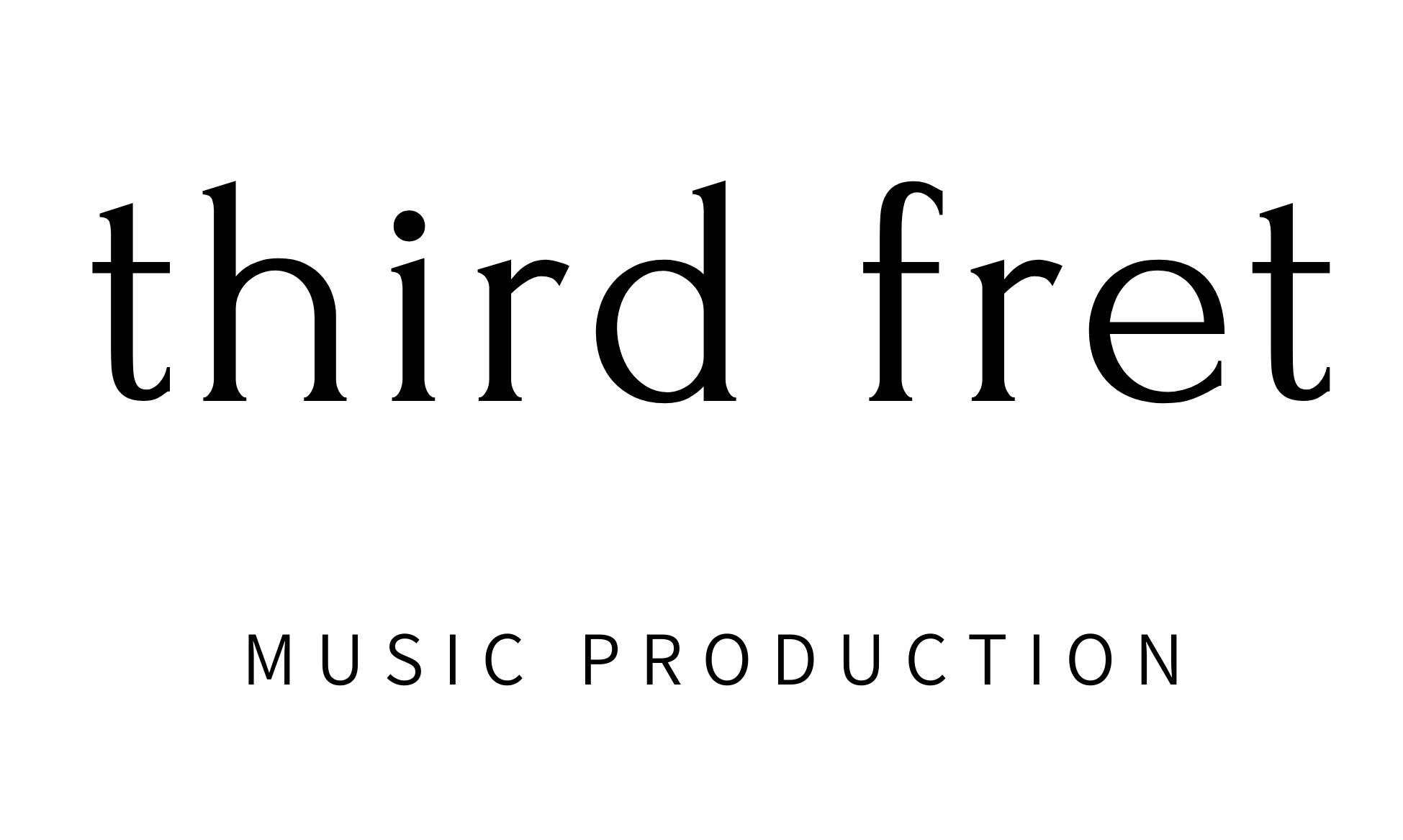Optimising your audio files for professional results
Showreels are becoming increasingly important to artists and bands when competing in the fast-paced, modern “gig economy”. Polished videography can be let down by poorly produced audio content and not show your act in the best light possible. At Third Fret, we can take your recorded audio (stems) and maximise its impact for your showreel.
Depending on the format and quality of your recorded audio (stems), there are a range of issues that can be addressed depending on the instrument, such as:
- Vocals – Pitching issues, Timing issues, Volume levels, Additional effects, Additional harmonies, Vocal qualities/Tone
- Guitar – Tonal qualities, Pitching issues, Smoothness, Volume levels, Additional effects
- Bass – Timing issues, Tonal qualities, Bounce and Punch, Additional effects
- Drums – Timing issues , Bounce and Punch, Additional effects, Tonal qualities
The finished audio will also be mastered in a variety of formats, suitable for platforms such as YouTube, iTunes and SoundCloud.
Recording Your Showreel Audio
For the majority of us, the choice of recording lies between a professional studio and home-recording. There are advantages and disadvantages to both, which will be discussed below, but there are some things you can do to allow you to alter your tracks at a later date if you are unhappy with the final product. The following advice will help you retain flexibility whatever your recording setup.
Recording in a Professional Studio
A professional recording studio will usually have the band playing together yet isolate the amps in a separate room and have the vocals sung in a separate booth. This means that the microphones only record the sound from their source and you can’t hear the other instruments in each mic (there is no mic bleed). This will result in many recordings of the different instruments, called stems. At the end of the recording process, the engineer will combine and balance these stems into a single stereo mix. Once this has happened there is only limited changes to the volume and equalisation that can be applied (as any change affects all instruments and vocals on the track).
In order to be able to change things at a later date it is necessary to have the original stems, and most studios will allow for a limited number of revisions (recalls). What can you do if you are still not happy with the result or change your mind much later?
You can protect yourself and your recording investment in a number of ways:
- You could ask for a copy of all stems that are recorded (unusual for studios to do this and may attract a further fee)
- You could ask for an acapella track (voice only), backing vocals only and a separate instrument track (most studios will provide this)
- You could re-record the vocal separately at a later stage
At Third Fret, we are happy to work with any of the above options. Our preference would be the original stems as this provides the greatest leeway. We are happy to discuss with you the range of things we could do, free of charge. Just send your recordings and questions to us at enquiries@thirdfretltd.com.
Recording at Home
If the audio for your showreel has been recorded at home, it is likely to be through an interface such as a mixing desk/multitrack recorder or an interface connected to a computer/DAW.
The ideal situation is, once again, each instrument recorded separately into an audio file, with instruments such as the drums having several individual microphones and audio files. This requires a multitrack recording desk (such as the SoundCraft Signature MTK Series) or an interface with numerous inputs (such as the Focusrite 18i20).
A more usual situation is that a normal mixing desk is used with a 2 channel (stereo) output. The options for recording are more limited in this situation but usable stems can be obtained by grouping instruments and panning them to separate left and right channels and recording the vocals separately to the main instruments.
Singer/songwriters and duos can record in a similar way.
Using an audio interface and DAW allows for the recording of separate tracks including MIDI instruments.
Third Fret can work with all of the above to achieve a professionally mixed and polished product. This service includes identifying and correcting problematic areas, applying effects and dynamics, balancing the mix, a pre-bounce track in the form of an MP3 file sent for your approval before the final mix, the final mix mastered for YouTube, iTunes and SoundCloud, final mix in WAV, MP3 and AIFF format, 2 recalls within 14 working days of receiving your track.
Please get in contact with us to discuss any requirements you may have and find out how we can help!
Recording Live
In general, live recordings rarely make a great showreel from an audio perspective, but they do convey the artist/band’s ability to excite and interact with an audience.
Some mixing desks allow direct recording of live shows as stereo tracks and some of the bigger multitrack and digital mixers allow recording of individual stems. If you are playing at a venue/show/festival with a supplied sound engineer, it is always worth contacting them in advance to ask if recording is possible. If it is, it will usually be free – just bring along a storage device (SD card, USB stick, hard drive).
Whilst live recordings are more challenging from a production point of view, at Third Fret we will happily evaluate your recordings, free of charge, and give you an indication of what can be achieved.
If you have any queries or additional requirements, please contact us at enquiries@thirdfretltd.com to discuss how we can help you.
